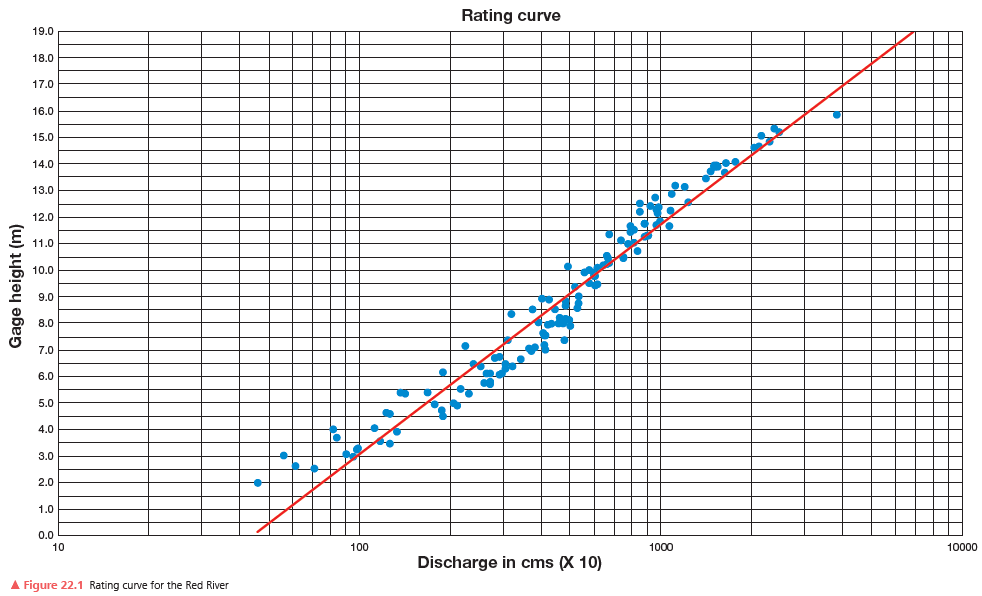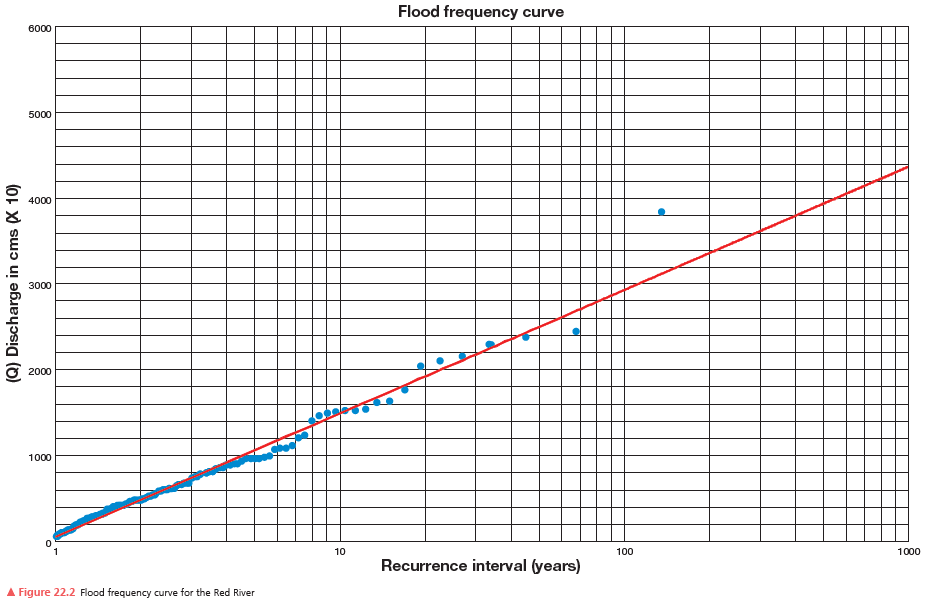A smart storm chaser is least likely to approach a tornado from this direction
A) southeast.
B) northeast.
C) northwest.
D) west.
E) southwest.
B
You might also like to view...
Use Figure 22.2 along with Figure 22.1 to determine the gage height of these flood frequencies. (Use the flood frequency curve in Figure 22.2 to obtain the discharge, and then use that discharge on the rating curve to determine the associated gage height.)


20-year flood: ________________
300-year flood: ________________
400-year flood: ________________
Suppose that where you live is typically several degrees warmer in the middle of January than the rest of the month. If you forecast this "January thaw" for the middle of next January, you would have made a ____
A) climatological forecast B) persistence forecast C) forecast based on weather types D) statistical forecast
Hydraulic fracturing is
A) a new technique of producing power using water. B) the use of cold fusion to produce nuclear power. C) a technique which forces oil and gas out of shale rock. D) an experimental technique for extracting oil from the ocean floor.
The Wild and Scenic Rivers Act of 1968 ________
A) no longer protects waterways because the act has been repealed to build more hydroelectric dams B) protects a designated waterway from being dammed C) limits dams to no less than 5 miles apart D) permits dams of no more than 10 feet in height to be built along a designated waterway E) is an agreement between the United States and Canada to protect rivers that cross the boundary between the two countries